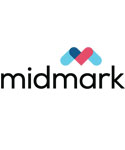Arrhythmias
Arrhythmias commonly occurring perioperatively include sinus tachycardia, sinus bradycardia, atrioventricular block, and ventricular arrhythmias. Monitor using auscultation or ECG and/ or by observing pulse–HR incongruity with Doppler ultrasound or SpO2 waveform. The decision of whether to treat an arrhythmia should be based on the severity, the effect on other hemodynamic parameters (e.g., BP), and the likelihood of deterioration to a more significant arrhythmia. Examples of common arrhythmias and treatment considerations seen during anesthesia can be found here.
Ventricular premature complexes (VPCs)

Treatment: Lidocaine bolus 2-4 mg/kg +/- CRI) is recommended when complexes are multiform (vs. uniform), causing hypotension, or occurring in significant runs. (Image courtesty of J. Gaynor)
High grade, second-degree atrioventricular (AV) block

Treatment: Atropine or glycopyrrolate is recommended when the patient is hypotensive and bradycardic. (Image courtesy of J. Gaynor)
Sinus bradycardia with a ventricular escape beat






